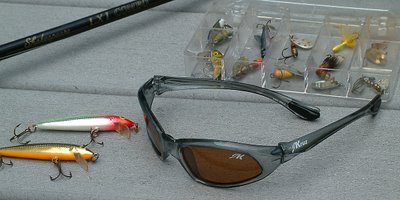For camera, spotting scope or rangefinder, everyone needs a Stedi-Stock®
by Steve Sorensen (originally published in Ohio Valley Outdoors magazine, July/August 2011)
 Stedi-Stock® Optical Assist Device
Stedi-Stock® Optical Assist DeviceI keep a pair of binoculars in my truck for scouting purposes, but often they don’t provide the magnification I want when I look into the far reaches of a field at a buck or a gobbler. For that, I need a spotting scope. The problem is that a spotting scope is impossible to hold still, and those awkward window-clamp devices take too long to line up properly.
Leave it to a creative service-disabled American veteran, a Texan named Harold Hurst, to come up with an inexpensive device for quick, rock-steady viewing through a spotting scope. It’s the Stedi-Stock® – the optical stabilizer that makes perfect sense.
The Stedi-Stock is a shoulder brace that looks like a small skeletonized rifle stock. It has a forward handle with a 1/4 x 20 camera screw on it to attach not only a spotting scope, but a still camera, video camera, or rangefinder. Rest it on the edge of the window of your truck, on a monopod or bipod, against a tree, or any way you’d steady a rifle. Nothing is quicker or easier to use.
The Stedi-Stock really shines when you’re using a long lens to take photos. I loaned it to my brother, an avid photographer, who was impressed with his ability to hold the camera still with a 200mm lens using the Stedi-Stock. His only suggestion was to add a thin rubber strip between the camera and the Stedi-Stock to create some friction that will help stabilize the camera on the camera screw. After loaning it to my brother, I have one problem. He won’t give it back.
When doing any kind of video, the Stedi-Stock eliminates those bouncy movements that only induce headaches and eyestrain. It’s so effective that professional photographers and videographers on some of your favorite outdoor TV shows are using it. And the price is unbelievably low – just $29.95.
Made from super tough hi-strength nylon, the Stedi-Stock is only 14 inches long and weighs just 6 ounces, so it won’t be a burden when you pack it to the high country or carry it on vacation.
For free-hand use, it has a shoulder strap that also functions as a carrying sling. Check it out, along with several accessories, at www.Stedi-Stock.com. If you use any kind of camera or spotting scope or rangefinder, this is the number one accessory you need. My advice is to buy two, because if you ever loan one out, you won’t see it again.








